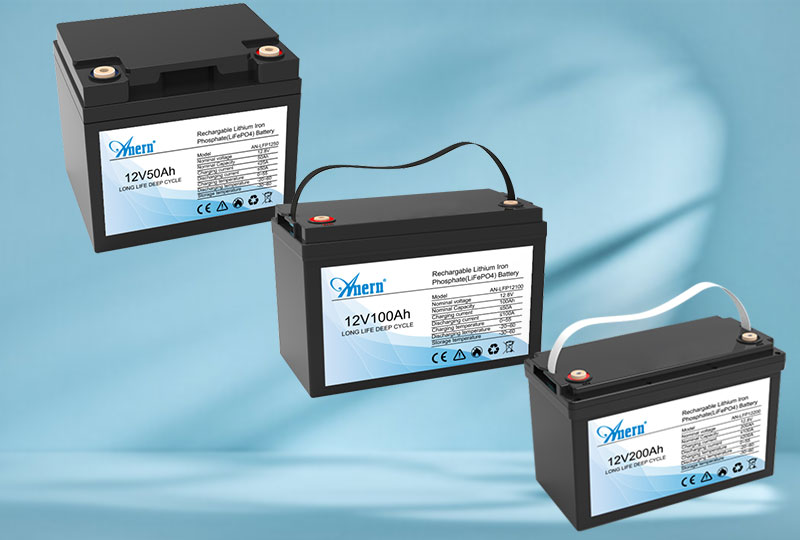¿Qué tipo de batería LiFePO4 es más rentable para el almacenamiento de energía solar doméstica?
Cuando se trata de construir un sistema de energía solar doméstico confiable y eficiente, es importante elegir el sistema adecuado. Batería solar de litio Es una decisión crucial. Entre las opciones más populares para el almacenamiento residencial se encuentran... Batería de litio solar LiFePO4 de 12 V, el Batería de litio solar LiFePO4 de 25,6 V, y el Batería de litio solar LiFePO4 de 51,2 VCada tipo de voltaje tiene sus propias ventajas, dependiendo del tamaño y los patrones de consumo energético de la vivienda. Pero ¿cuál ofrece la mejor relación calidad-precio a largo plazo?
Para responder a esa pregunta, veamos algunos aspectos clave: necesidades de energía, eficiencia de la batería, costos de cableado e instalación, y retorno de la inversión general del sistema.
Un hogar típico en EE. UU. consume unos 30 kWh de electricidad al día. Las casas más pequeñas o las que priorizan el consumo energético pueden consumir tan solo entre 10 y 15 kWh, mientras que las casas más grandes con calefacción eléctrica o cargadores para vehículos eléctricos pueden superar los 40 kWh diarios.
Supongamos que una vivienda promedio pretende almacenar entre 10 y 20 kWh de energía solar al día para cubrir el consumo nocturno. El voltaje del banco de baterías influye significativamente en la eficiencia del sistema y su coste final.

El Batería de litio solar LiFePO4 de 12 V Es una opción común que se usa a menudo en vehículos recreativos, minicasas y pequeños sistemas de respaldo. Gracias a su bajo voltaje, es más fácil de manejar y configurar. Para consumidores con necesidades energéticas moderadas (alrededor de 5 kWh/día), las baterías de 12 V pueden ser suficientes.
Sin embargo, conectar varias baterías de 12 V en serie y en paralelo para lograr una mayor capacidad de almacenamiento implica configuraciones más complejas. Esto incrementa los costos, no solo en cables, sino también en sistemas de equilibrado y mano de obra. Además, la pérdida de energía es mayor en configuraciones de bajo voltaje debido al aumento de corriente, especialmente en tramos de cable más largos.
Instantánea de costos (ejemplo para una capacidad de 10 kWh):
Requiere ~8 baterías de 12 V 100 Ah
Inversión total: mayor debido a más componentes
Eficiencia: ~88–90% debido a una mayor pérdida de corriente
Más adecuado para: cabañas, pequeñas instalaciones fuera de la red, bajo consumo diario.
El Batería de litio solar LiFePO4 de 25,6 V (comúnmente conocido como sistema de 24 V) ofrece un buen equilibrio entre eficiencia energética y simplicidad de diseño. Es una opción popular para hogares medianos que consumen entre 10 y 15 kWh al día.
Debido a que la corriente es menor en comparación con los sistemas de 12 V, se pierde menos energía en el cableado. Se necesitan menos baterías para alcanzar una mayor capacidad, y muchos inversores y controladores de carga son compatibles directamente con sistemas de 24 V. Además, las baterías de 25,6 V ofrecen una excelente relación calidad-precio en cuanto a costes de componentes y flexibilidad de instalación.
Instantánea de costos (ejemplo para una capacidad de 10 kWh):
Requiere ~4 baterías de 25,6 V 100 Ah
Inversión total: moderada
Eficiencia: ~92–94%
Más adecuado para: hogares de tamaño mediano, configuraciones de red híbrida, cargas moderadas
El Batería de litio solar LiFePO4 de 51,2 V (también conocido como sistema de 48 V) es el estándar para el almacenamiento de energía solar residencial a gran escala. Con un mayor voltaje, el sistema funciona con una corriente más baja, lo que reduce drásticamente las pérdidas de cableado y permite cables más delgados y un funcionamiento más eficiente.
También es compatible con inversores de alta potencia capaces de alimentar cargas de toda la casa, incluyendo sistemas de climatización, electrodomésticos grandes e incluso cargadores de vehículos eléctricos. Si bien el costo inicial de la batería por unidad puede ser mayor, se requieren menos baterías para alcanzar una capacidad de 10 o 20 kWh, y el ahorro a largo plazo en eficiencia e instalación lo convierte en una opción atractiva.
Instantánea de costos (ejemplo para una capacidad de 10 kWh):
Requiere ~2 baterías de 51,2 V 100 Ah
Inversión total: inicialmente mayor por batería, pero menor costo general del sistema
Eficiencia: ~95–96%
Más adecuado para: casas de tamaño completo, hogares con alta demanda, objetivos de independencia energética
Para los propietarios que planean una instalación solar pequeña y portátil o que solo necesitan energía para lo esencial, la opción de 12 V sigue siendo viable. Pero para la mayoría de los hogares de tamaño estándar que buscan eficiencia y ahorro a largo plazo, la Batería de litio solar LiFePO4 de 25,6 V ofrece un excelente punto intermedio. Y para quienes buscan la independencia energética total o planean expandirse en el futuro, Batería de litio solar LiFePO4 de 51,2 V es claramente la opción más rentable a largo plazo.
Elegir lo correcto Batería solar de litio El voltaje no se trata solo de lo que funciona hoy, sino de lo que ahorra dinero y rinde bien en los próximos 10 a 15 años. En el cambiante mundo de la energía solar residencial, un mayor voltaje suele ser sinónimo de mayor valor.

Correo electrónico : g-ad@anern.com
Add :5th Floor, Building B, No.2817 Kaichuang Avenue, Science Zone, Huangpu District, Guangzhou, China
Anern Industria Group Limited Reservados todos los derechos
.Xml | política de privacidad  RED SOPORTADA
RED SOPORTADA